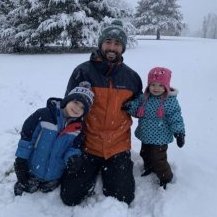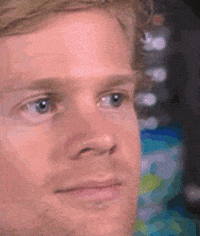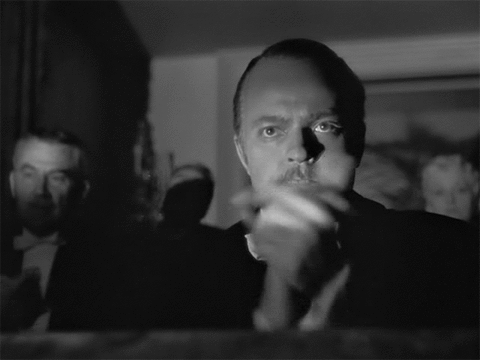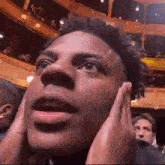-
Posts
26,576 -
Joined
-
Last visited
Content Type
Profiles
Blogs
Forums
American Weather
Media Demo
Store
Gallery
Everything posted by psuhoffman
-
People who don’t tip are bad people. If you want to protest the way the system is then don’t go out to eat. That hurts the system. But if you go to a restaurant and pay the establishment but then stiff the person serving you knowing they are not paid a living wage and they are relying on your tip, you aren’t protesting a system, you’re just hurting someone, probably less fortunate than you.
-

January: Medium/ Long Range: May the Force be with Us....
psuhoffman replied to Weather Will's topic in Mid Atlantic
Maybe, and on a long enough timescale definitely. But for over 100 years it’s been going one direction. -

January: Medium/ Long Range: May the Force be with Us....
psuhoffman replied to Weather Will's topic in Mid Atlantic
When I pull the plug on winter I make it 100% clear. But often I’m making a specific singular point and people take it on way too broad a way. -

January: Medium/ Long Range: May the Force be with Us....
psuhoffman replied to Weather Will's topic in Mid Atlantic
Everything is a matter of degrees. But in essence yes. Our best snow pattern relies on a split flow with blocking over the top and a broad trough that directs waves at us from the TN valley. There is going to be some attempt at a SER in that long wave configuration. But the way it’s worked to our advantage in the past was if there was a cold antecedent airmass and blocking the SER was suppressed and the waves coming at us from the SW get shunted east. So we get this fetch of moisture coming at us over the cold but the storm gets forced to transfer under us. But what happens if you add more heat to all that. Waves coming in off the pacific have more energy and amplify more out west which pumps the SER more. The gulf and atl are warner which pumps the SER more. At some point there is a tipping point where the SER wins and that equation doesn’t work anymore. -

January: Medium/ Long Range: May the Force be with Us....
psuhoffman replied to Weather Will's topic in Mid Atlantic
Depends how we fail. If we get a trough in the east but we just get unlucky with wave spacing and timing that’s ok. Sucks but doesn’t say much about future chances. That happens. But if we have a pacific Nino look with a central pac trough and an epo to nao ridge bridge w split flow and the stj waves all amplify too much out west and the SER can’t be squashed then I don’t even know what to root for if we want a big snowstorm. Yea sure we could root for a typical Nina look and hope to luck into waves like we’ve been trudging through the last 8 years but what’s our path to a legit big snowstorm cause that ain’t it. Our big snow look relies on a split flow with blocking over the top. Waves come off the pac and slide east under the blocked flow. But if too much heat gets added to that setup and there becomes a feedback loop where the pacific waves come in and amplify too much out west which feeds into the SER which is also getting fed by a warmer Gulf…well other than the pacific and gulf cooling what’s the solution. And I’ve seen no one saying they expect the SST trends to reverse anytime soon. -

January: Medium/ Long Range: May the Force be with Us....
psuhoffman replied to Weather Will's topic in Mid Atlantic
Don’t over react to my post. I was making a single point about a phenomenon that’s been impacting our snowfall a lot recently. I did not say we’re doomed or this pattern can’t work. -

January: Medium/ Long Range: May the Force be with Us....
psuhoffman replied to Weather Will's topic in Mid Atlantic
I’m not saying this happens. But we’ve seen what the 12z gefs is showing several times. A SER linking with the NAO. But this is different because we have a favorable pacific long wave configuration with a trough centered from Hawaii to just west of AK with a ridge bridge from AK to the NAO. If that doesn’t work I don’t even know what we want for a big snowstorm anymore. If that happens I don’t want to hear “it’s the PDO or the pacific”. I suspect a big part of that is something else. This isn’t complicated. The more heat you add the the equation the harder it is to suppress a SER from over the top. Additionally the warmer storms are coming off the pacific the more they are going to amplify faster out west and pump that SER downstream. That’s a pure “too much heat added to the equation” issue that won’t be fixed by any long wave pattern. That said given enough time I’d still take my chances that something comes off the pacific and doesn’t over amplify and cuts under the NS flow. I’m not tossing any towel. This is just pointing something out. -

January: Medium/ Long Range: May the Force be with Us....
psuhoffman replied to Weather Will's topic in Mid Atlantic
2009 was one of my top analogs and ended badly for us despite a pretty good pattern on the Atlantic side for a chunk of the winter. but the biggest difference and why I started to think maybe this year has more potential than I was giving it, the pacific. The guidance is showing almost the opposite pattern there and way closer to a typical Nino than Nina look. If that is legit the bar is a lot higher. The Nina pac with central pac ridge and NW Canada trough is a severe limiting factor on our chances even with blocking. It doesn’t matter that we are in cold enso of the pacific doesn’t actually have a Nina long wave pattern. Similarly to how recent ninos don’t help when the pattern never couples with a canonical Nino configuration. -

January: Medium/ Long Range: May the Force be with Us....
psuhoffman replied to Weather Will's topic in Mid Atlantic
This might not be the most effective way to combat clickbait. -

January: Medium/ Long Range: May the Force be with Us....
psuhoffman replied to Weather Will's topic in Mid Atlantic
-

January: Medium/ Long Range: May the Force be with Us....
psuhoffman replied to Weather Will's topic in Mid Atlantic
Euro op is similar evolution to Jan 2000 -

January: Medium/ Long Range: May the Force be with Us....
psuhoffman replied to Weather Will's topic in Mid Atlantic
Chuck pointed it out yesterday, I love seeing the cold anomalies centered in the TN valley. That’s our big snowstorm loading pattern look! -

January: Medium/ Long Range: May the Force be with Us....
psuhoffman replied to Weather Will's topic in Mid Atlantic
It’s a really good pattern with ridiculous upside which is rare in a cold enso. The similarities to 1996 with the current look on guidance shows this perhaps has more upside that we would typically look for in a cold enso year but it’s important to remember we do get these high potential setups and they don’t come together and produce sometimes. Even if the pattern on guidance is legit we could strike out. But I’m encouraged. I don’t throw around 1996 lightly. Usually I dismiss the possibility of that kind of repeat pointing out just how much of an outlier it is. But I can’t ignore what’s staring us in the face and the potential that exists. -

January: Medium/ Long Range: May the Force be with Us....
psuhoffman replied to Weather Will's topic in Mid Atlantic
That was my threshold that would make a better outcome “possible”. If you look at all the anomalous snowy cold enso years some are slightly negative, but none are in that -2 or -3 range we were hanging out in. At the time I said it I didn’t think there was much chance we would get anywhere near neutral by January but here we are. -
At least it looks christmassy
- 209 replies
-
- 19
-

-
lol Im still cautious. Long way to go before we’re measuring anything. But most of what I do is just math. Playing probabilities. And the probabilities say -pdo cold enso years are likely to be garbage. But flukes happen. 1996 happened. 2014 happened. They aren’t the most likely outcome and you’ll lose betting on that outcome most often but they do happen. More likely than those level flukes one off storm flukes happen like Jan 2000 and Feb 2006. What I’m seeing opens the door to the possibility this is an anomaly year. That’s all. I’ll take my chances considering how things could look right now. Several years recently I was working on my “winters over” draft about now!
-
Look I know, but the fact is the best cold enso match to todays eps is 1996 and it’s not close
-
I will be tracking our incoming HECS on my fight home January 4th.
-
Merry Christmas.
-
Im less sure of the larger PDO cycle, but we don’t need a wholesale PDO flip we just need the current near record negative one to end. There are cycles within cycles of the PDO. Within the decades long larger cycles there are shorter spikes. We don’t need a crazy positive PDO. 2010 was neutral. 2014 was slightly negative. A lot of the snowy winters in the 60s were neutral or slightly negative. But we need the -2 to -3 dip within the longer -pdo to end. There is some regularity to these cycles too. The last 3 severe -pdo periods lasted 4-9 years. We’re now 5 years in so it could start to flip anytime now. But it might take a few more years.
-
I agree to an extent but I do think there is an applicable lesson to be taken from what happened regarding the long range teases in both 2019 and 2024. In both cases the dominant long wave influence was a strongly -pdo pacific base state. In both cases the extended guidance wanted to quickly morph the pattern into a canonical look for the SSTs. Additionally NWP did a similar thing day 15+ in 2021 when a kind of hybrid pattern dominated yet at range the extended often wanted to resume a more canonical Nina look. I think guidance is over weighting enso SSTs at range. I don’t know the physics behind it but that seems too much a coincidence. But that isn’t necessarily what’s going on here. Actually guidance is bucking a standard weak cold enso look. Now that doesn’t mean it’s right. Maybe it’s wrong for a different reason now but I don’t think it’s doing the same thing as last year fwiw.
-
Sorry it had to do that, I’m not back yet.
-
I share the skepticism but ironically the pacific was in a more Nina base state last year than this one so far. I don’t know what it means. I think enso is decreasing in impact, especially when it’s weak or in contradiction with the pacific background state. But let me be clear, when I say I’m interested in that look, it’s with the notion maybe we get a window where we could get a snowstorm. A. Singular. One. I’m not suggesting 2010 or 1996 are walking through that door. I’m just hoping for a 2006 or 2000 here.
-
In both 2019 and 2024 the epic blocking looks would start to degrade before getting inside day 10. Usually they were handing out around day 15-20 and occasionally would get inside day 15 but never inside day 10. If this look can survive a few more days without getting can kicked my interest will increase exponentially
-
100! What has my interest is that we might get a window where there is enough ridging up top that combined with the EPO actually increases our chances of a snowstorm. Enough that maybe we have a slight chance to buck the odds and get that one hit that can make a season. That's realistically all I am rooting for...yea we might eek our way to a few minor events, whatever...but honestly what will make or break this season is if we can get lucky, find a small window, and hit big one time.










